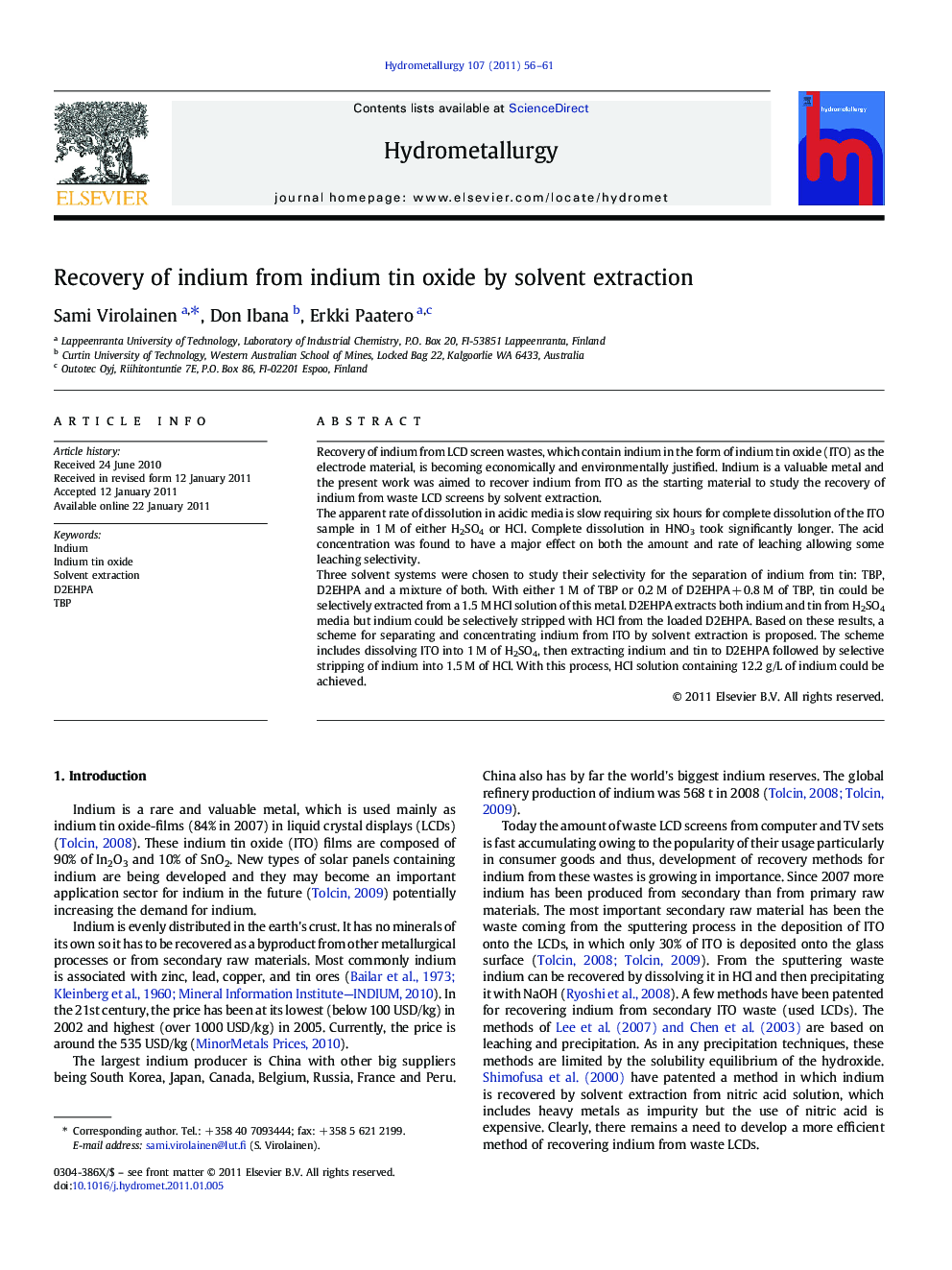| Article ID | Journal | Published Year | Pages | File Type |
|---|---|---|---|---|
| 212819 | Hydrometallurgy | 2011 | 6 Pages |
Recovery of indium from LCD screen wastes, which contain indium in the form of indium tin oxide (ITO) as the electrode material, is becoming economically and environmentally justified. Indium is a valuable metal and the present work was aimed to recover indium from ITO as the starting material to study the recovery of indium from waste LCD screens by solvent extraction.The apparent rate of dissolution in acidic media is slow requiring six hours for complete dissolution of the ITO sample in 1 M of either H2SO4 or HCl. Complete dissolution in HNO3 took significantly longer. The acid concentration was found to have a major effect on both the amount and rate of leaching allowing some leaching selectivity.Three solvent systems were chosen to study their selectivity for the separation of indium from tin: TBP, D2EHPA and a mixture of both. With either 1 M of TBP or 0.2 M of D2EHPA + 0.8 M of TBP, tin could be selectively extracted from a 1.5 M HCl solution of this metal. D2EHPA extracts both indium and tin from H2SO4 media but indium could be selectively stripped with HCl from the loaded D2EHPA. Based on these results, a scheme for separating and concentrating indium from ITO by solvent extraction is proposed. The scheme includes dissolving ITO into 1 M of H2SO4, then extracting indium and tin to D2EHPA followed by selective stripping of indium into 1.5 M of HCl. With this process, HCl solution containing 12.2 g/L of indium could be achieved.
Research Highlights►Used LCD screens from computers and TVs are possible sources of indium. ►Indium is located at the surface of screen glasses in the form of indium tin oxide (ITO). ►Sulphuric acid is preferred in the leaching of ITO. ►Indium can be concentrated and separated from tin by solvent extraction.
